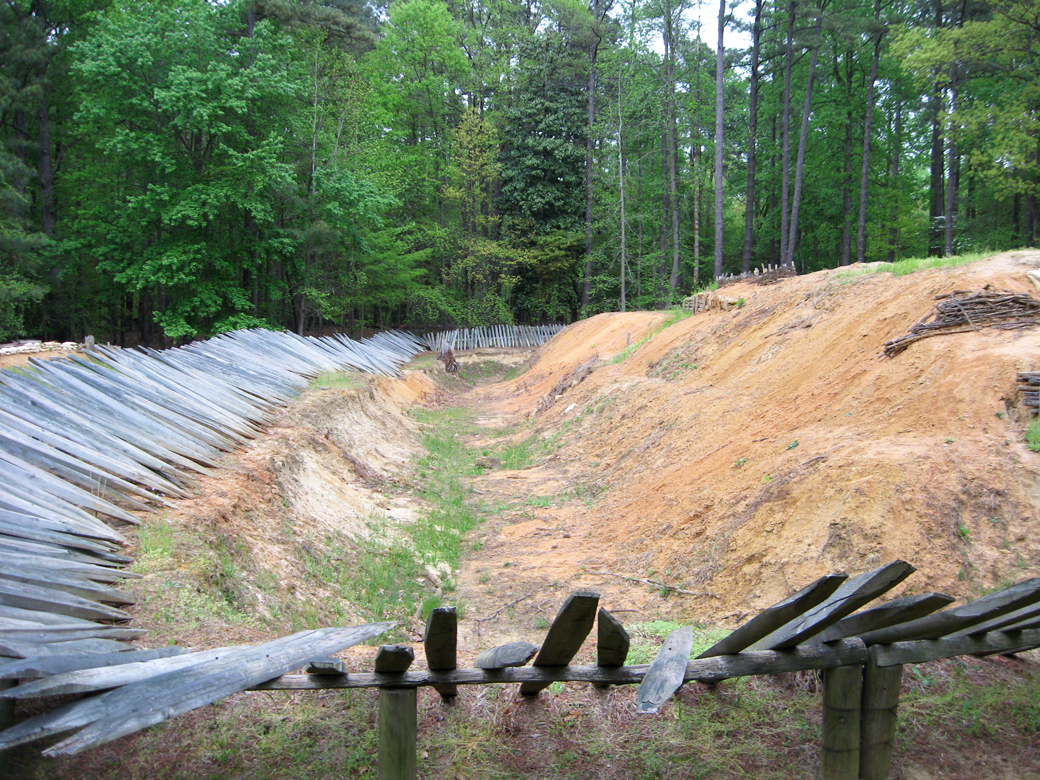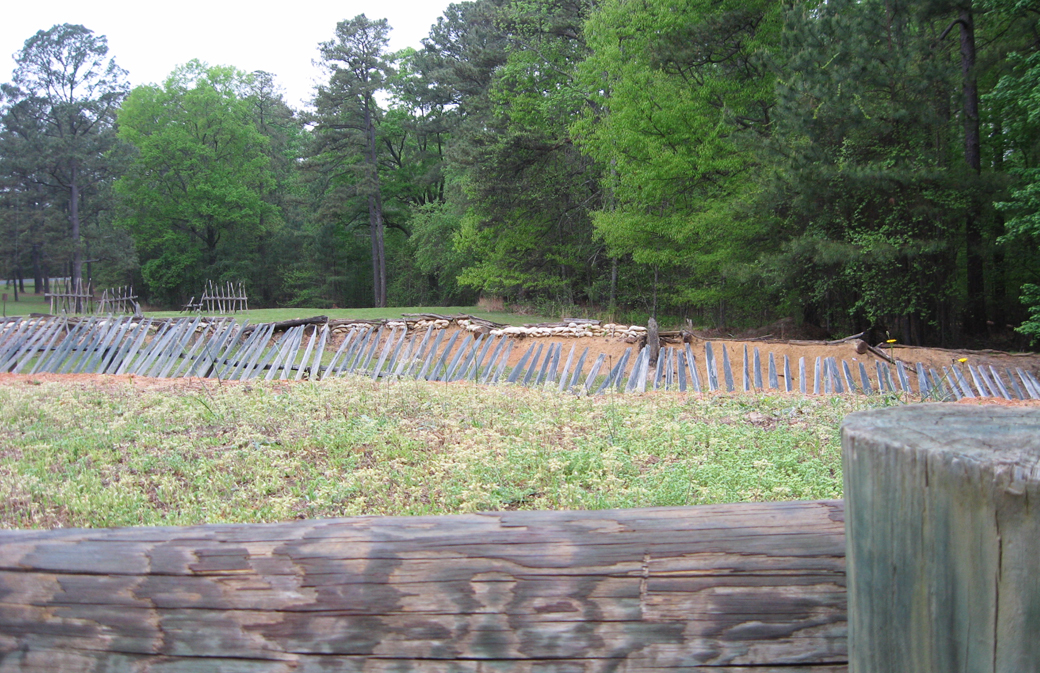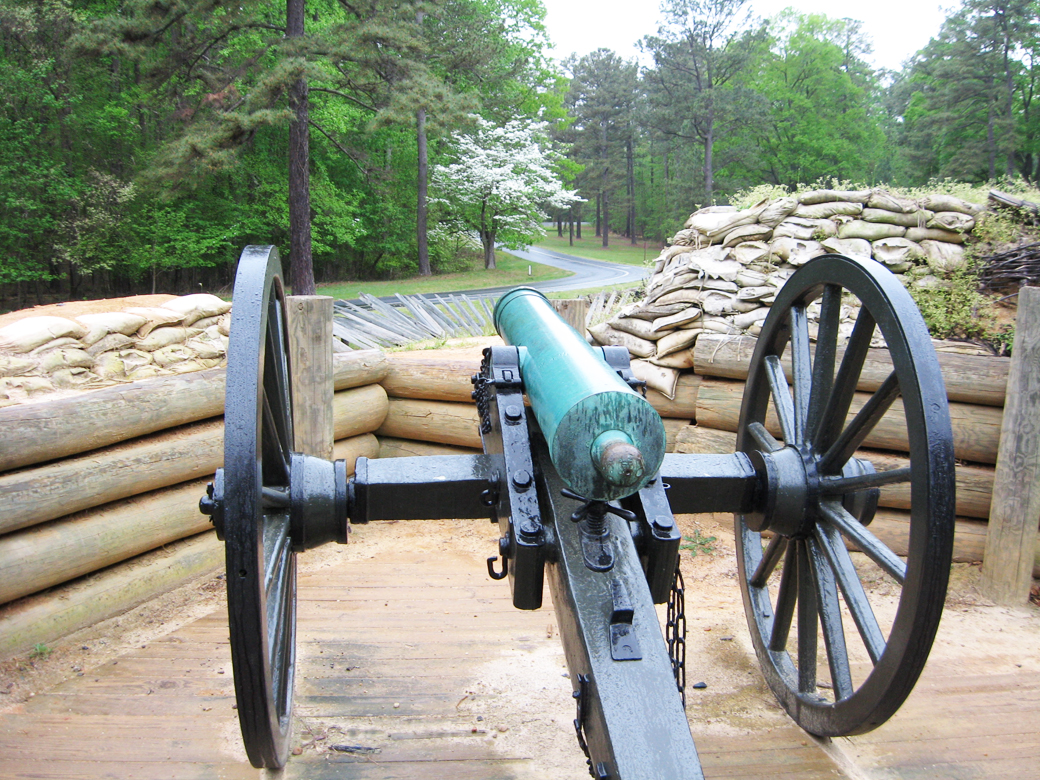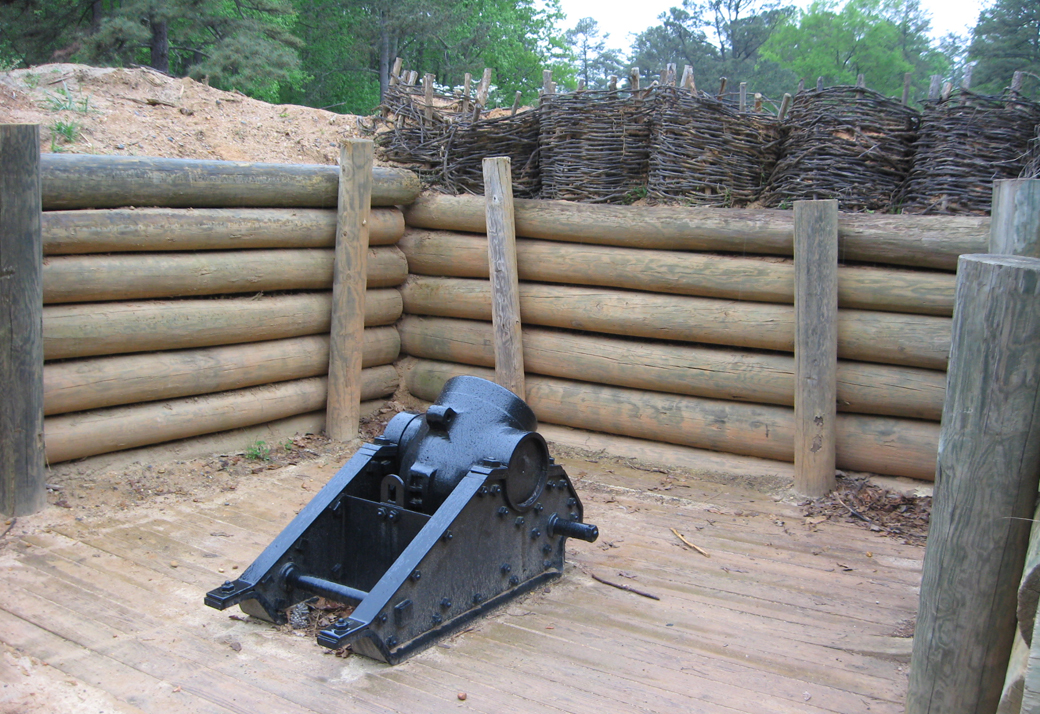Petersburg • East • Southeast • West • Monuments • Markers • Facts • Timeline
 Reconstructions of typical defensive positions in the Petersburg siege works are at Stop Three on the Petersburg National Battlefield Eastern Front Auto Tour, along with a reconstruction of a winter soldiers’ hut. The nearby ‘Infantry Earthworks’ wayside marker provides details on the defenses.
Reconstructions of typical defensive positions in the Petersburg siege works are at Stop Three on the Petersburg National Battlefield Eastern Front Auto Tour, along with a reconstruction of a winter soldiers’ hut. The nearby ‘Infantry Earthworks’ wayside marker provides details on the defenses.

(above) Advanced positions were relatively cruder than the main defenses. They were intended as listening and early warning posts that would shelter a few men from sharpshooters and artillery but that would be evacuated in a major attack.
From outside the defenses the view is daunting to an attacker. Sharpened stakes, called abatis, and a steep slope will stop or slow down an attacker where they are the most vulnerable to close-range fire. The defender is relatively safe behind log-supported earth thick enough to stop most projectiles.

In the woods around Petersburg these types of defenses could be constructed relatively quickly, and by this point in the war both arms were expert.

(above) Some defenses had a ditch as well as an abatis to further throw off an attacker, especially if the ditch were partially water filled or muddy.

(above) The display on the Petersburg battlefield shows some of the materials used for the defenses.

(above) The view looking out from behind the parapet is much more secure. Some defenses would add a “head log” at the top which left a gap for the defender to look or fire through while providing protection for a defender’s head.

The defenses around Petersburg changed the landscape for miles, creating what many soldiers referred to as “prairie dog towns.” The scene above includes parapets, two artillery positions, and a sheltered “bombproof” for ammunition.

Critical locations in the defenses were strengthened with artillery. Smoothbore cannon such as this one were popular at relatively close ranges because they could fire larger charges of deadly canister – basically a giant shotgun shell consisting of a can filled with iron balls – than smaller-bored rifled artillery. The dense woods and trench warfare around Petersburg was not ideal for longer ranged rifled field artillery, and the Federal armies actually reduced their proportion of modern rifled pieces in favor of smoothbores during the siege.

Most smoothbore and rifled artillery were designed for direct fire, which was good for defending against attackers out in the open but relatively ineffective against a target in a trench. To hit a target behind earthworks you needed a mortar, which lobbed its shell high in the air and (hopefully) behind any defenses. Mortars had not been much used in the Eastern Theater of the Civil War before Petersburg, due to their lack of mobility and very short range, a liability in the mobile warfare of the earlier years of the war. But they came into heavy use as the trenches spread across Virginia.
There were several sizes of mortars, from pieces that threw 12 and 24 pound shells that could be moved by two or four men, to mortars with 8, 10 and 13 inch diameters. Probably most famous was the Dictator, which weighed 17,000 pounds, could fire a 200 pound shell around three miles, and was fired from a specially strengthened railroad car on a stretch of curved track east of Petersburg. A replica of the Dictator is on display at its firing location at Stop One on the Auto Tour.
